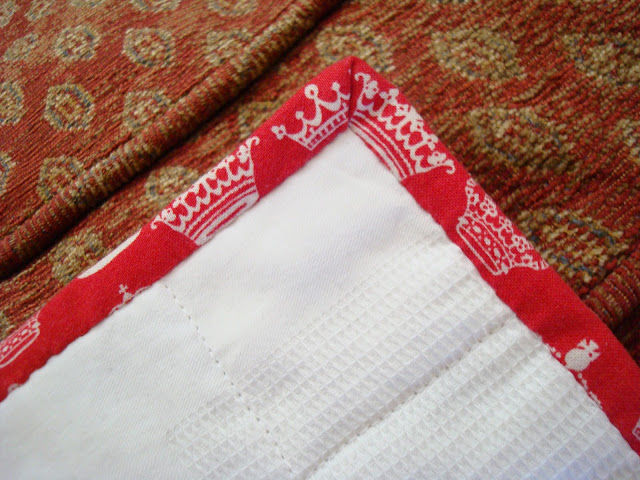I was inspired to make this tiny sun frock after watching BBC TV's The Great British Sewing Bee.
I have never made a frock before so I thought I would start small. The dresses they made on TV were very cute. They had shirred bodices and rouleau straps. What struck me, when watching the judging of the dresses made by the contestants, was the number of different techniques that could be demonstrated in such a small garment.
I have never made a frock before so I thought I would start small. The dresses they made on TV were very cute. They had shirred bodices and rouleau straps. What struck me, when watching the judging of the dresses made by the contestants, was the number of different techniques that could be demonstrated in such a small garment.
I don't have any shirring elastic in the house. In fact I haven't seen any since I was a little boy and my Mam put some in the cuffs of one of the sweaters either she or Gran had knitted for me. It was blue flecked wool with a crew neck and I rather liked it. I would put money on that same bobbin of shirring elastic still being in my Mam's mending box 30 years later. I must ask her the next time we Skype - I digress.
With no shirring elastic in the house, and no desire to go and buy any, a shirred bodice was out. I don't have a gathering foot either. Does anyone know if the braider foot from the Singer 28K's archaic tool kit would work? From what I can gather that foot, teamed with additional bits and bobs, was for braiding, quilting, hemming and binding - Dr Singer's Universal Cure All! Anyway, I found this pattern online.
I had plenty of off-cuts of nice white cotton kicking around after I finished making the backing of the log-cabin quilt so I set to work. I wanted this project to be a work out for the new (to me) Singer 99K and an exercise in using as many different accessories as possible.
- French seams (seam guide)
In the short time I have been sewing I have made the seam guide my right hand (this is almost literally the case when you are sewing with a hand crank). The seam guide is so useful on little black Singer's that don't have markings on their needle beds. I found Muv's video on French seams indispensable with this task.
- Gathering (ruffler)
Lots of people, I have read online, are afraid of the ruffler foot that came with their machines. I have never been afraid, more unsure, of how to control the results on a project I might already have spent a lot of time on. This project was different. The whole point was to try different techniques and attachments without getting hung up on the results. I set the ruffler to 'gather' rather than pleat, set the Singer 99K for the longest stitch and the ruffler to the fullest gather. By luck rather than hard work and good management the skirt ended up gathered to nearly exactly the same width as the bodice. WOW! - Corded piping (adjustable cording foot)
This felt like a biggie. I got to cut my first bias binding from a scrap of striped poplin shirting. I used the corded handle from a gift bag and got to try out the adjustable cording foot. I have used it to install the zipper in a hobo bag I made on the Singer 201K. I think my first attempt is passable but it was more about the learning experience. I am encouraged to use this technique in the future.
- Hemming (adjustable hemmer)
I did try this but it really wasn't successful. It felt impossible to get the bulk of the French seams through the adjustable hemmer. This fabric has a strong pattern of squares which was a gift for turning a regular hem so I did that. Job done.


























